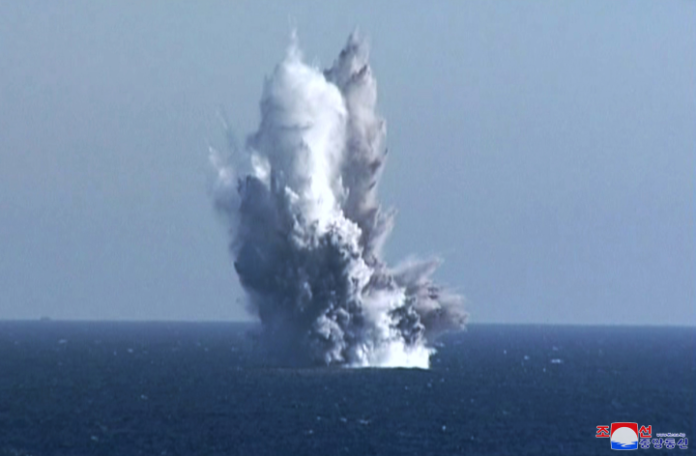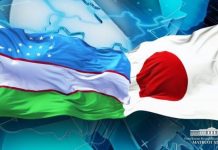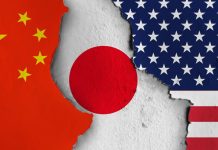On September 8, 2006, in the city of Semipalatinsk the Republic of Kazakhstan, the Kyrgyz Republic, the Republic of Tajikistan, the Republic of Turkmenistan and the Republic of Uzbekistan signed the Treaty on a Nuclear-Weapon-Free Zone in Central Asia (Semipalatinsk Treaty). On March 21, 2009 that treaty went down in history as the Fifth Treaty (following four similar treaties: Treaty of Tlatelolco, Treaty of Bangkok, Treaty of Rarotonga and Treaty of Pelindaba). The very first nuclear-weapon-free zone was established in 1967 in Latin America under the so-called Treaty of Tlatelolco. Then, such zones began emerging in the South Pacific in 1985 (Treaty of Rarotonga), in Southeast Asia in 1995 (Treaty of Bangkok), and in Africa in 1996 (Treaty of Pelindaba). Besides,after adopting the Antarctic Treaty (1959), the Outer Space Treaty (1967) and the Seabed Treaty (1971) those locations also became nuclear-weapon-free zones. In its turn, Mongolia unilaterally proclaimed itself a nuclear-weapon-free country.
Since 2009, consultative meetings have been held annually in the capitals of Central Asian states with the aim of discussing the relevant matters pertaining to NWFZ activities and interaction. The result was the increased role and importance of Central Asia in the international arena on the issue of nuclear non-proliferation.
A significant step in the process of institutionalizing the zone was signing of a guarantee protocol to the Semipalatinsk Treaty by representatives of the five nuclear-weapon States (China, Russia, the USA, the United Kingdom and France)at the UN headquarters in New York on May 6, 2014. Thus, an important step was made towards the legal maturity of the NWFZ.
In accordance with the Semipalatinsk Treaty, its Member States committed to banning production, purchase and deployment of nuclear weapons and their components or other nuclear explosive devices in the region. At the same time, the treaty does not prohibit the development of peaceful national nuclear programs.
Compared to other NWFZs existing in the world, the Central Asian NWFZ has its special distinctive features. For instance, no other NWFZ existing in the world includes any country previously possessing an arsenal of nuclear weapons.
Entirely located in the Northern Hemisphere, the territory of this zone is fully enclosed by land and directly borders on two powerful nuclear states — China and Russia — and is adjacent to India and Pakistan.
The Treaty on the CA NWFZ is the first to include a requirement of full obedience to the IAEA Additional Protocol and the Nuclear-Test-Ban Treaty.
Moreover, the treaty obliges Central Asian states to comply with the international safety requirements for nuclear facilities. The treaty encourages support for rehabilitation measures in the field of protecting the environment affected by implementing nuclear programs during the Cold War.
Having given up nuclear weapons, Central Asian countries retained the capability to develop the ’peaceful atom’, including nuclear power and nuclear fuel production. Moreover, they have been actively addressing the global community by presenting the idea of strengthening international security through making the world free from nuclear weapons. The ongoing efforts include establishing cooperation with other nuclear-weapon-free zones. On the whole, it can be said that the process of achieving the status of a nuclear-weapon-free region started with the decision by N. Nazarbayev, President of the Republic of Kazakhstan, on closing the Semipalatinsk nuclear test site on August 29, 1991. Years later a UN General Assembly resolution proclaimed that day the International Day against Nuclear Tests When voluntarily giving up the world’s fourth-largest nuclear potential, the Kazakhstan’s arsenal comprised 110 intercontinental ballistic missiles with 1,200 warheads able to reach any place on the globe. In cooperation with the USA and Russia, those warheads, bombs and nuclear explosive devices were disposed of and removed from the territory of Kazakhstan, while their means of delivery and launchers were destroyed.
After the Semipalatinsk test site was closed, all leading nuclear powers suspended their nuclear tests. The conditions were created for an international legal ban on nuclear testing across the globe. All that ultimately paved the way for the 1996 adoption of the Comprehensive Nuclear-Test-Ban Treaty. It is known that the huge nuclear weapon arsenal accumulated since the second half of the 20th century can destroy not only humanity itself but all life on Earth. States stockpile a great variety of weapons and view them as the only guarantee of their security. That is,the global arms race continues. Lethal types of weapons might have evolved much but humans creating them have changed very little.
Humans know that the possession of more powerful weapons leads to a more global war. Each new war entails massive devastation and destruction. That means that each frantic armament propels humanity into a deadlock and despair.
The French philosopher Teilhard de Chardin, thinking about the relationship between human beings and the globe, introduced the new concept of noosphere.
’Noo’ stands for ’mind’. That is, he warned that misuse of intellect and mind.would lead to self-destruction. This notion was developed in the works of the Russian academician V. I. Vernadsky who came to Borovoe on vacation and wrote extensive scientific articles. He gave a different meaning to the noosphere concept:he argued that in the course of its evolution, humanity was turning into a new and powerful ’geological force’ transforming the face of the Earth with its ideas and endeavors. In view of that claim, in 1994, together with A. Zhelobenko, Head of the Environmental Safety Department of the Kazakhstan Institute for Strategic Studies under the President of the Republic of Kazakhstan, we launched the Noosphere — Jerbesik journal (Noosphere is the Cradle of the Earth) published in Kazakh and Russian languages. The main goal of our journal dedicated to the quest for sustainable human development was to draw the attention of the country’s decision makers to the need to comply with the internationally adopted Rio Declaration and other documents including international conventions to which Kazakhstan acceded.
On reflection, it was my destiny to combat nuclear weapons well before I got into the field of diplomacy. I had to manifest my first activities even as a postgraduate of Patrice Lumumba Peoples’ Friendship University (UDN) in Moscow. Apparently, there was some reason for that. In 1989, I accidentally met with Anuar Mustafin. He introduced himself as a friend of and adviser to Olzhas Suleimenov. Once A. Mustafin found out that I studied with foreigners, he asked me to invite international students to take part in the peace action to close the Semipalatinsk test site. He announced that he was going to visit the Semipalatinsk region by charter flight and that I could join that peace action together with international students and postgraduates. There was no time to spare. I managed to inform only one student and one postgraduate from Brazil and got their consent to come along with me to Karaul, Semipalatinsk region, to participate in that event.
Apart from Olzhas Suleimenov and Anuar Mustafin, the plane bore Rollan Seisenbaev, the writer I did not know. He noticed dark-skinned foreigners seated next to me and came up to me. Having made acquaintance with us and talked to us,he gave us his thankful blessing saying, “If you ever come across any foreigner who supports Kazakhs, get acquainted and be friends with them.” In Karaul we saw a familiar person, Genrikh Borovik, former USSR Peace Ambassador, and listened to his speech.
I returned from that trip cherishing a special feeling, as if I, too, was able to contribute to the cause of closing the test site. In the Soviet time, in addition to the information that ordinary people knew, there were details that were not heard about at all, not known, not supposed to be known. There was so much information like that, it had no end in sight. It was not safe to be particularly enthusiastic about searching for and reviewing such information. For commoners, especially Kazakhs, such classified information included the subject of the Semipalatinsk nuclear test site. What was exploded, how it was exploded, how dangerous the consequences of those explosions were for the population — the media were deafeningly silent about that. Even if someone wanted to know, that information was impossible to find anywhere. Nobody, be it the national prominent persons or public figures, researchers, artists, creators, did not say a word to the younger generation about the devastating consequences of nuclear warhead explosions.
There were many reasons for that. On the one hand, that was submission to the hard-line policy of the totalitarian system; on the other hand, there were no social networks and available sources of information such as Facebook, Instagram,WhatsApp, Telegram.
Moreover, having gone through the harsh school of the Soviet system, we had a very low level of environmental awareness and environmental culture. That was noticeable in report by the USSR delegation participating in the UN Conference on Environment and Development held in Stockholm in 1972 under the name the First Earth Summit. The Soviet spokesman astounded all conference participants with the following statement, “The Soviet Union developing within the framework of the socialist state-planned model of national economy does not have the environmental problem.” But Communists did not even realize that progressively thinking politicians of the world who noticed that at the colossal rate of human development people started to destroy themselves and ran the risk of making the environment uninhabitable, reached the agreement “to gather every 20 years and hold an Earth Summit to prevent environmental destruction and eliminate the destructive implications of technological progress.”(To be continued).
 Author:Mursal-Nabi Tuyakbaev,Honored Diplomatic Service Officer of the Republic of Kazakhstan,Associate Member of the National Academy of Natural Sciences of Kazakhstan.
Author:Mursal-Nabi Tuyakbaev,Honored Diplomatic Service Officer of the Republic of Kazakhstan,Associate Member of the National Academy of Natural Sciences of Kazakhstan.






